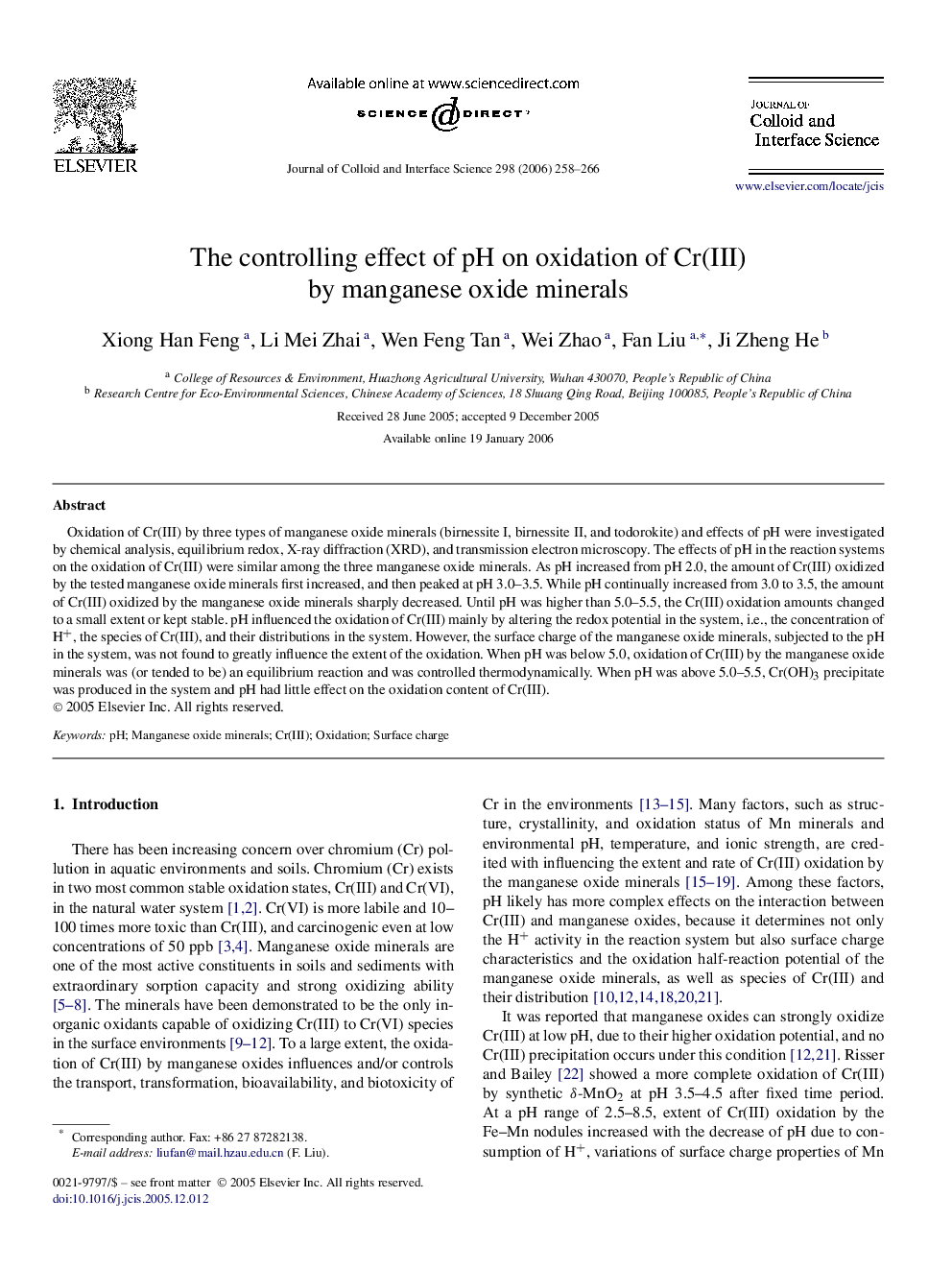| Article ID | Journal | Published Year | Pages | File Type |
|---|---|---|---|---|
| 613631 | Journal of Colloid and Interface Science | 2006 | 9 Pages |
Oxidation of Cr(III) by three types of manganese oxide minerals (birnessite I, birnessite II, and todorokite) and effects of pH were investigated by chemical analysis, equilibrium redox, X-ray diffraction (XRD), and transmission electron microscopy. The effects of pH in the reaction systems on the oxidation of Cr(III) were similar among the three manganese oxide minerals. As pH increased from pH 2.0, the amount of Cr(III) oxidized by the tested manganese oxide minerals first increased, and then peaked at pH 3.0–3.5. While pH continually increased from 3.0 to 3.5, the amount of Cr(III) oxidized by the manganese oxide minerals sharply decreased. Until pH was higher than 5.0–5.5, the Cr(III) oxidation amounts changed to a small extent or kept stable. pH influenced the oxidation of Cr(III) mainly by altering the redox potential in the system, i.e., the concentration of H+, the species of Cr(III), and their distributions in the system. However, the surface charge of the manganese oxide minerals, subjected to the pH in the system, was not found to greatly influence the extent of the oxidation. When pH was below 5.0, oxidation of Cr(III) by the manganese oxide minerals was (or tended to be) an equilibrium reaction and was controlled thermodynamically. When pH was above 5.0–5.5, Cr(OH)3 precipitate was produced in the system and pH had little effect on the oxidation content of Cr(III).
Graphical abstractpH effect on oxidation of Cr(III) by manganese oxide minerals was controlled by the redox potential when pH < 5 and dependent on dissolution equilibrium of Cr(OH)3 and exposure of surface sites when pH > 5.Figure optionsDownload full-size imageDownload high-quality image (37 K)Download as PowerPoint slide
